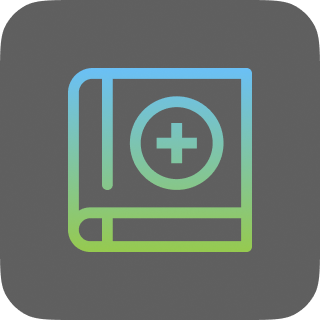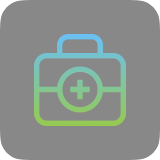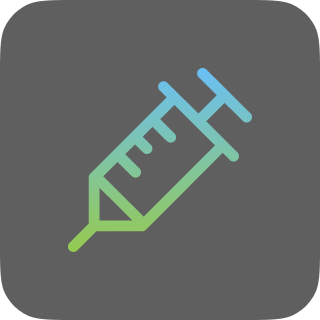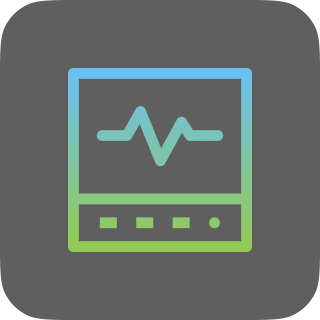Allergies in Children
View spanish version, share, or print this article.
Allergy describes a condition involving the immune system that causes sneezing and itching, chronic rashes, wheezing, or even life-threatening allergic reactions. Whether these reactions are minor or serious, there are things you can do to prevent or control most allergic problems.
The more you know about allergies, the more prepared you will be to help your child. Read on for more information from the American Academy of Pediatrics about allergy symptoms, causes, and treatments.
What is an allergy?
Allergies happen when the part of the body that fights off illnesses (the immune system) overreacts to a usually harmless substance (called an
Anaphylaxis—A severe and possibly life-threatening allergic reaction.
Asthma—When the airways swell and spasm and cause air passages in the lungs to narrow. Asthma may be triggered by an allergic reaction, although a nonallergic trigger can also be the cause (such as an infection or exercise).
Contact dermatitis—An itchy rash caused by skin coming into contact with things such as poison ivy and oak and certain chemicals in items such as creams, cosmetics, and jewelry.
Eczema—Also called atopic dermatitis; a chronic itchy rash.
Food allergy—An allergic reaction to food that can range from stomachache, to skin rash, to a serious medical emergency such as anaphylaxis.
Hay fever—An allergic reaction in the nasal passages causing a runny, itchy, and stuffy nose and sneezing. Hay fever can occur at certain times of the year or all year long. Symptoms such as itchy, red, and watery eyes often occur along with the nasal symptoms.
Hives—Itchy welts that may be caused by foods, a virus, medicines, or other triggers.
Insect sting allergy—Potentially severe reactions from the stings of bees, wasps, hornets, yellow jackets, fire ants, or other stinging insects.
Medication allergy—Symptoms such as rashes or more severe problems from various prescription or nonprescription medicines or vaccines.
What causes allergies?
Children get allergies from coming into contact with allergens. Allergens can be inhaled, eaten, or injected (from stings or medicine), or they can come into contact with the skin. Some of the more common allergens are
Pollens from trees, grasses, and weeds
Molds, both indoor and outdoor
Dust mites that live in bedding, carpeting, and other items that hold moisture
Animal dander from furry animals such as cats, dogs, horses, and rabbits
Some foods and medicines
Venom from insect stings
What is anaphylaxis?
Anaphylaxis is a serious allergic reaction. It comes on quickly and can be fatal. Your child will need to be treated right away followed by a call to 911 or your local emergency number.
Treatment
The main medicine used to treat anaphylaxis is
Download and fill out an Allergy and Anaphylaxis Emergency Plan at HealthyChildren.org/AnaphylaxisPlan.
Symptoms
Anaphylaxis includes a wide range of symptoms that often happen quickly. The most common symptoms may affect the following parts of the body:
Skin—itching, hives, redness, or swelling
Nose—sneezing, stuffy nose, or runny nose
Mouth—itching or swelling of the lips or tongue
Throat—itching, tightness, trouble swallowing, or hoarseness
Chest—shortness of breath, cough, wheeze, chest pain, or tight feeling in the chest
Heart—weak pulse, passing out, or shock
Gut—vomiting, diarrhea, or cramps
Nervous system—dizziness, fainting, or feeling that you are about to die
Causes
Here are the most common allergens that can trigger anaphylaxis.
Foods, especially peanuts, tree nuts (such as almonds, Brazil nuts, cashews, pecans, and walnuts), shellfish, fish, milk, and eggs. In rare cases, anaphylaxis may be related to a certain food followed by exercise.
Insect stings such as from bees, wasps, hornets, yellow jackets, or fire ants.
Medicines such as antibiotics and anti-seizure medicines. However, any medicine, even aspirin and other nonsteroidal anti-inflammatory drugs, has the potential to cause severe reactions.
Allergies tend to run in families. If a parent has an allergy, there is a higher chance that his or her child will also have allergies. This risk increases if both parents are allergic.
How can I tell if symptoms are from allergies or a cold?
Allergies affecting the nose can result in the following symptoms:
An itchy, runny nose with thin, clear nasal discharge; a stuffy nose; or both
Itchy, watery eyes
Repeated sneezing and itching of the nose, eyes, or skin that lasts for weeks or months
No fever
Often seasonal symptoms; for example, only in spring, in summer, or in fall before frost
Sleepiness (Usually, however, children with nasal symptoms caused by allergies do not "act sick.")
Cold symptoms include
Stuffy nose
Nasal discharge that is clear or colored and is thick, and that lasts 3 to 10 days, with or without fever, usually at times of the year such as the cold and flu season
Occasional sneezing
Feeling sick, tired, or listless and having a poor appetite
When do allergic symptoms in children first show up?
Some allergic conditions show up early in life. For example, eczema often occurs in the first few years after birth, while hay fever usually appears during preschool or early grade school. For some children, allergies lessen around the time of puberty. Others will continue to have problems into adult years.
Do drug treatments help?
There are many medicines to treat allergic conditions. Medicines include antihistamine pills or syrup, eye drops, nasal sprays, asthma treatments, and creams or ointments. Some are available over the counter. These medicines can help relieve symptoms such as itching, sneezing, congestion, runny nose, wheeze, cough, and rashes. Allergy medicines may have minor side effects such as sleepiness and irritability. Before using any allergy medicines, carefully read the warnings on the label. If any of these medicines does not relieve your child's symptoms or if the side effects are too strong, call your pediatrician. Your child may need a different medicine or dose. Although medicines can be helpful, it is also important to identify allergy triggers and remove them when possible.
Common Allergic Conditions
| Condition | Triggers | Symptoms |
|---|---|---|
| Anaphylaxis | Foods, medicines, insect stings, and latex | Skin, gut, and breathing symptoms that may worsen quickly. Severe symptoms could include trouble breathing and poor blood circulation. |
| Asthma | Cigarette smoke, viral infections, pollens, dust mites, furry animals, cold air, changing weather conditions, exercise, airborne mold spores, and stress | Coughing, wheezing, and trouble breathing(especially during activities or exercise); chest tightness |
| Contact dermatitis | Skin contact with poison ivy or oak, latex, household detergents and cleansers, or chemicals in some cosmetics, shampoos, skin medicines, perfumes, and jewelry | Itchy, red, raised patches that may blister if severe. Most patches are found at the areas of direct contact with the allergen. |
| Eczema (atopic dermatitis) | Sometimes worsened by food allergies or coming into contact with allergens such as pollens, dust mites, and furry animals. May also be triggered by irritants, infections, or sweating. | Dry, red, itchy skin and rashes. The rashes can be oozing or very dry. |
| Food allergies | Any foods, but the most common are eggs, peanuts, milk, nuts, soy, fish, wheat, and shellfish | Vomiting, diarrhea, hives, eczema, trouble breathing, and possibly a drop in blood pressure (shock) |
| Hay fever | Pollen from trees, grasses, or weeds | Stuffy nose, sneezing, and runny nose; breathing through the mouth because of stuffy nose; rubbing or wrinkling the nose and face to relieve nasal itch; watery, itchy eyes; or redness or swelling in and under the eyes |
| Hives | Food allergies, viral infections, and medicines such as aspirin and penicillin. Sometimes the cause is unknown. | Itchy skin patches or bumps (large and small) commonly known as welts that are more red or pale than the surrounding skin. Hives may be found on different parts of the body and do not stay at the same spot for more than a few hours. |
| Insect sting allergy | Insect stings such as from bees, wasps, hornets, yellow jackets, or fire ants | Anaphylaxis |
| Medication allergy | Various types of medicines or vaccines | Itchy skin rashes; anaphylaxis |
When does my child need to see an allergist?
In some cases, your pediatrician may recommend that your child see a board-certified allergist, a doctor who specializes in allergies. The allergist will most likely
Look for triggers for your child's allergy.
Suggest ways to avoid the cause of your child's symptoms.
Give you a treatment plan to follow.
What are allergy shots?
Allergy shots, also called immunotherapy, may be recommended. These shots contain small amounts of the substances to which your child is allergic. This therapy allows your child's body to become less sensitive to these substances. Allergy shots can help decrease symptoms of hay fever and asthma and prevent anaphylaxis from insect sting allergies. However, they are not available for food allergies.
How can I help my child?
Identifying and avoiding the things your child is allergic to is best. If your child has an allergic condition, try to identify and avoid triggers in the following ways:
Keep windows closed during the pollen season, especially on dry, windy days when pollen counts are highest.
Keep the house clean and dry to reduce mold and dust mites.
Avoid having pets and indoor plants.
Avoid things that you know cause allergic reactions in your child.
Prevent anyone from smoking anywhere near your child, especially in your home and car.
See your pediatrician for safe and effective medicine that can be used to help alleviate or prevent allergy symptoms.
Listing of resources does not imply an endorsement by the American Academy of Pediatrics (AAP). The AAP is not responsible for the content of external resources. Information was current at the time of publication. The information contained in this publication should not be used as a substitute for the medical care and advice of your pediatrician. There may be variations in treatment that your pediatrician may recommend based on individual facts and circumstances.










